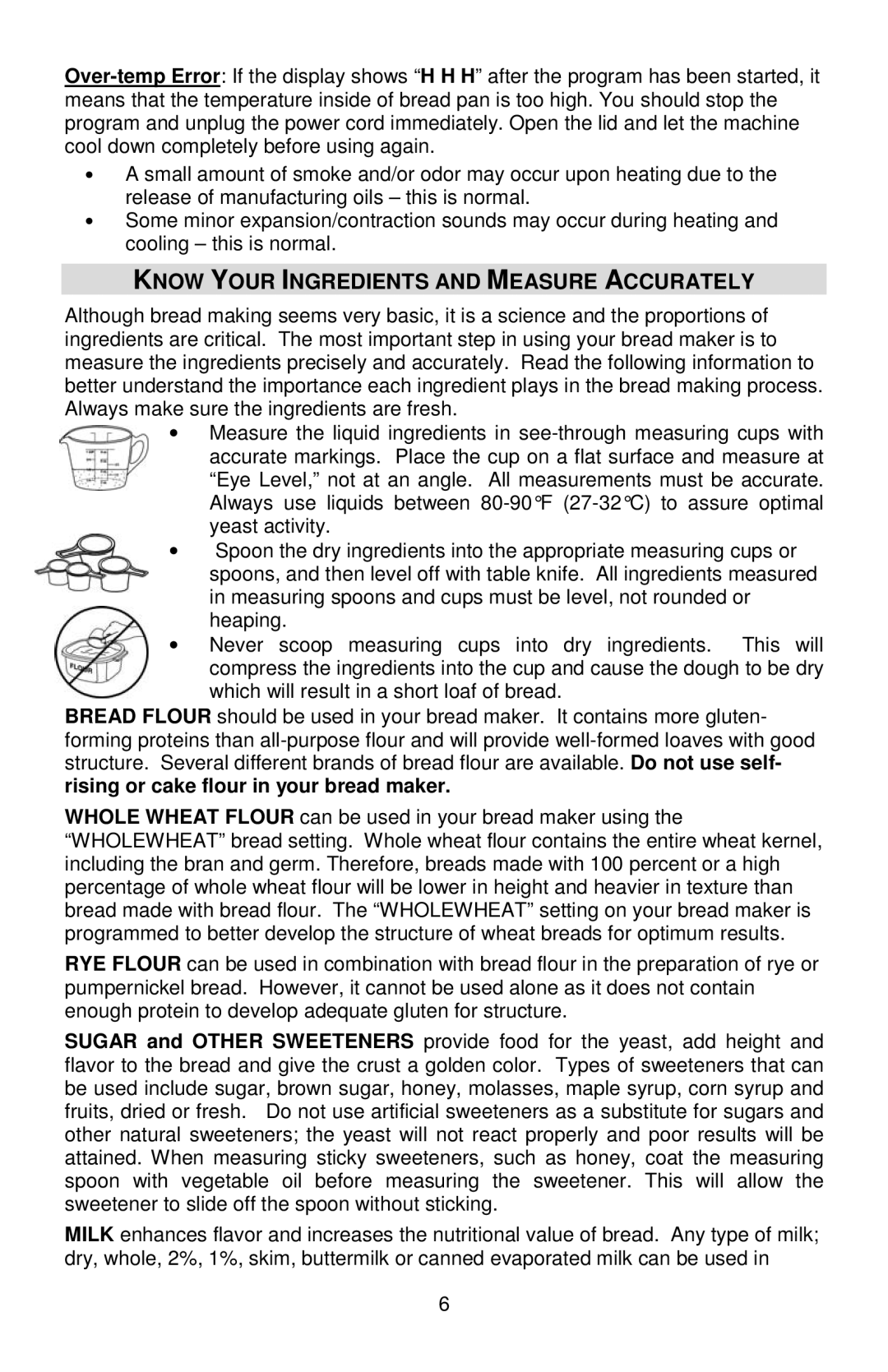
•A small amount of smoke and/or odor may occur upon heating due to the release of manufacturing oils – this is normal.
•Some minor expansion/contraction sounds may occur during heating and cooling – this is normal.
KNOW YOUR INGREDIENTS AND MEASURE ACCURATELY
Although bread making seems very basic, it is a science and the proportions of ingredients are critical. The most important step in using your bread maker is to measure the ingredients precisely and accurately. Read the following information to better understand the importance each ingredient plays in the bread making process. Always make sure the ingredients are fresh.
•Measure the liquid ingredients in
•Spoon the dry ingredients into the appropriate measuring cups or spoons, and then level off with table knife. All ingredients measured in measuring spoons and cups must be level, not rounded or heaping.
•Never scoop measuring cups into dry ingredients. This will compress the ingredients into the cup and cause the dough to be dry which will result in a short loaf of bread.
BREAD FLOUR should be used in your bread maker. It contains more gluten- forming proteins than
WHOLE WHEAT FLOUR can be used in your bread maker using the “WHOLEWHEAT” bread setting. Whole wheat flour contains the entire wheat kernel, including the bran and germ. Therefore, breads made with 100 percent or a high percentage of whole wheat flour will be lower in height and heavier in texture than bread made with bread flour. The “WHOLEWHEAT” setting on your bread maker is programmed to better develop the structure of wheat breads for optimum results.
RYE FLOUR can be used in combination with bread flour in the preparation of rye or pumpernickel bread. However, it cannot be used alone as it does not contain enough protein to develop adequate gluten for structure.
SUGAR and OTHER SWEETENERS provide food for the yeast, add height and flavor to the bread and give the crust a golden color. Types of sweeteners that can be used include sugar, brown sugar, honey, molasses, maple syrup, corn syrup and fruits, dried or fresh. Do not use artificial sweeteners as a substitute for sugars and other natural sweeteners; the yeast will not react properly and poor results will be attained. When measuring sticky sweeteners, such as honey, coat the measuring spoon with vegetable oil before measuring the sweetener. This will allow the sweetener to slide off the spoon without sticking.
MILK enhances flavor and increases the nutritional value of bread. Any type of milk; dry, whole, 2%, 1%, skim, buttermilk or canned evaporated milk can be used in
6
